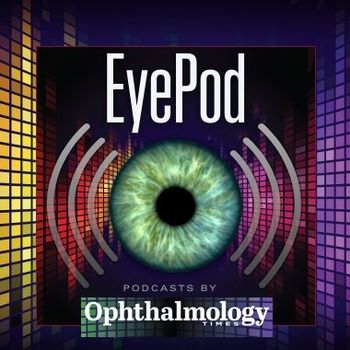
Study finds fixed combination safe for corneal endothelium
The intraocular pressure-lowering drugs netarsudil ophthalmic solution 0.02% and latanoprost 0.005% administered separately and then compared with the fixed-combination formulation are similar regarding their effect on the corneal endothelium.
A study of the IOP-lowering drugs netarsudil ophthalmic solution 0.02% (Rhopressa, Aerie Pharmaceuticals) and latanoprost 0.005% administered separately and in fixed-combination showed that the fixed combination was comparable to either netarsudil or latanoprost administered alone with regard to effects on endothelial cell health from baseline to month three of administration.
“After three months of administration, netarsudil 0.02%/latanoprost 0.005% fixed combination demonstrated no significant adverse effects on endothelial cells,” said C. Ellis Wisely, MD, MBA.
Dr. Wisely, a resident working under the direction of Terry Kim, MD, in the department of ophthalmology at the
According to Dr. Wisely, the results of the fixed combination formulation were compared with the results obtained when the two drugs were administered separately. The investigators evaluated the corneal endothelial cells using specular microscopy and ultrasound pachymetry to detect any changes in the cells.
Outcome measures
The main outcome measures were the endothelial cell density (ECD), coefficient of variation (CV), percentages of hexagonal cells (%HEX), and central corneal thickness (CCT). The outcomes were the changes in those parameters from baseline to three months.
A total of 415 patients were included in the study and randomly assigned as follows: 126 patients were treated with latanoprost, 143 with netarsudil, and 126 with the fixed combination. Dr. Wisely reported that there were no statistically significant differences in the changes observed from baseline to month three in the ECD, CV, and %HEX between the fixed-combination group and either component group. Small changes were seen in the CCT ranging from 0.6% to 1.2% in all three groups.
“Mean CCT decreased more in the fixed combination group (-6.4 µm, p<0.0001) than in either the netarsudil group (-3.3 µm, p = 0.0248) or the latanoprost group (-1.2 µm, p<0.0001).” Dr. Wisely reported.
The investigators pointed out some temporary and minor adverse events associated with the drugs. In 18 eyes of nine patients, i.e. four treated with the fixed combination and five treated with netarsudil, transient endothelial cell pleomorphism was seen that resolved by the end of the study without cessation of therapy.
In addition, in 32 eyes of 16 patients, i.e. 10 treated with the fixed combination and six treated with netarsudil, specular microscopy showed distorted endothelial cell morphology that resolved in 15 of the 16 patients by the end of the study.
Observations
In commenting on these findings, the investigators pointed out that use of prostaglandin analogues, such as latanoprost, can result in reductions in the CCT with chronic use of more than 18 months (mean decreases, from 5 µm to 15 µm) during the first six to 12 months of treatment.
These decreases are reversible with cessation of the drug. It is thought that up-regulated matrix metalloproteinases may promote likely negligible degradation of the ocular surface matrix. Rho kinase inhibitors, such as netarsudil, can cause thinning of the CCT; however, the investigators noted that thinning has occurred only in eyes with pathology associated with corneal edema in which the thinning is an approach to normalization of CCT.
The possible mechanisms include promotion of endothelial cell proliferation and migration,, suppressed apoptosis, and faster corneal wound healing.
“The greater reduction in the CCT in our fixed-combination group may indicate that the effects of each drug on the CCT are additive. However, the magnitude of the effect seen for the combination group in this study (1.2%) is likely of negligible clinical significance,” Dr. Wisely concluded.
Newsletter
Don’t miss out—get Ophthalmology Times updates on the latest clinical advancements and expert interviews, straight to your inbox.





